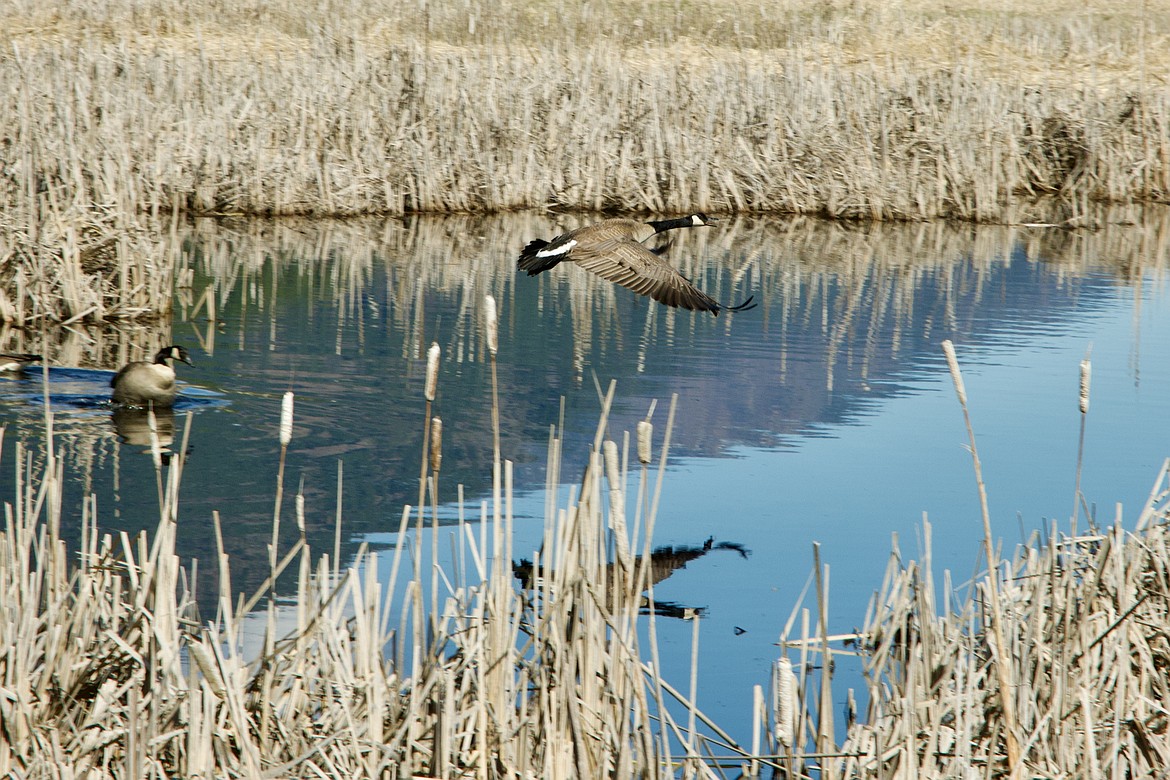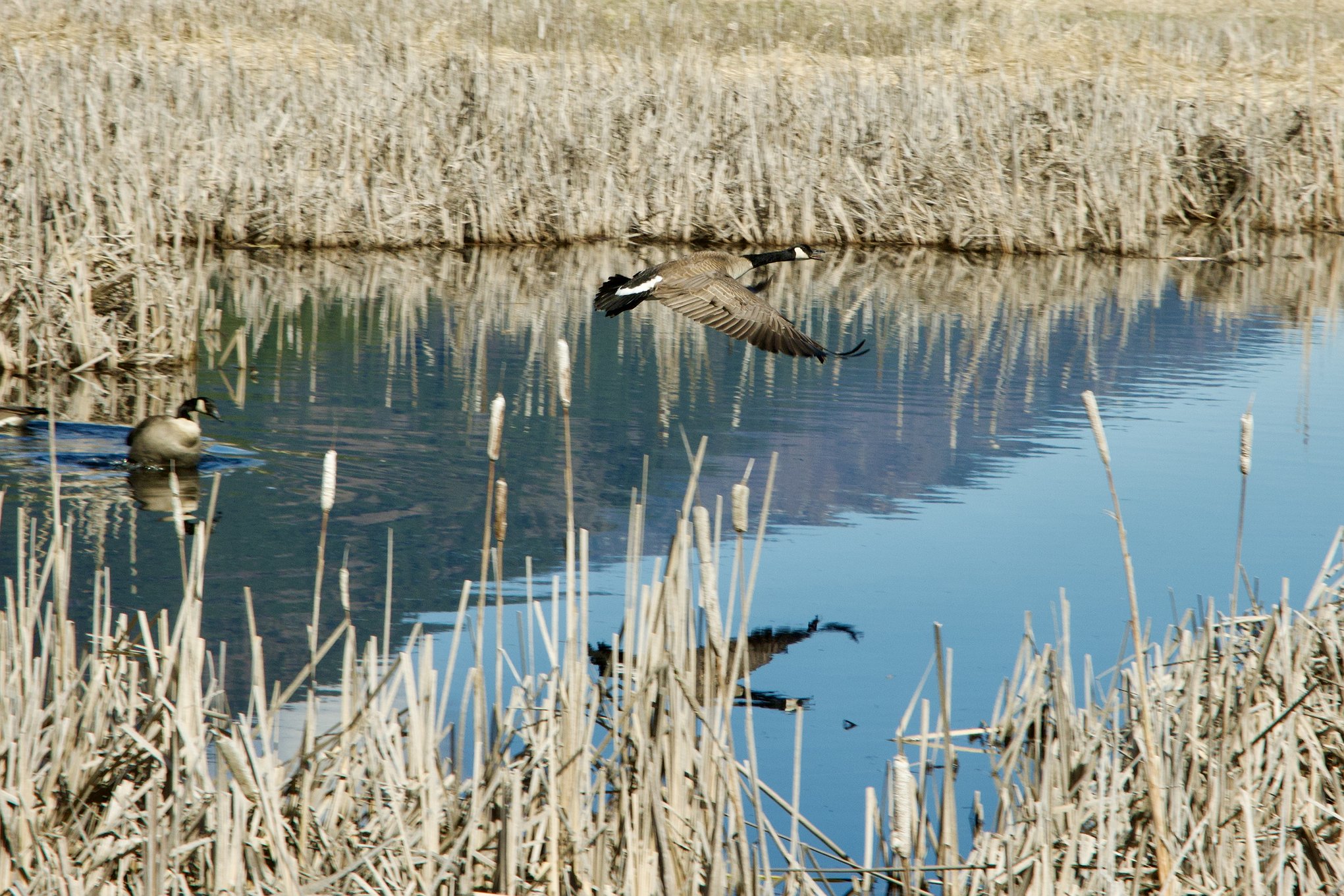Wildlife refuge to close for summer restoration
Recreators have emerged with the arrival of spring in North Idaho, but for those planning to enjoy the Kootenai National Wildlife Refuge this summer, they’ll have to wait out the dry season, as a five-month habitat restoration project is scheduled to break ground this June.
Many refuge enthusiasts — including wildlife photographers, a solo hiker and a family — were surprised when told last weekend that the Auto Tour Route, Deep Creek Trail and a 1.7-mile stretch of Riverside Road that runs through the refuge will all be closed this year from June to as late as the end of October.
But the Kootenai National Wildlife Refuge Floodplain Reconnection Project is years in the making. The notion to modify or remove Kootenai River drainage infrastructure to restore the valley’s floodplain habitats goes back to at least 2011, when the Kootenai Tribe of Idaho and the Bonneville Power Administration initiated the Kootenai River habitat restoration program.
As the project fiduciary, the BPA will be publishing its final Environmental Assessment, based off a fall 2024 draft, on April 16. From there, refuge management said the Kootenai Tribe will host a presentation explaining the project and fielding questions from the public in May.
Then, restoration construction will take place from approximately June 1 to Oct. 31, and Riverside Road construction is expected to happen from July 1 to Oct. 31, according to the EA draft. Refuge management told the Herald those dates are not yet set in stone.
According to the EA draft, the project aims to restore seasonal flooding to the refuge through a series of levy breaches. The reintroduction of nutrients from the Kootenai River will “address historical loss” of riparian and wetland habitats, which were depleted by 47 miles of river and tributary dikes constructed in the early 1900s.
“When people see the equipment on the landscape and the bare ground, they automatically think we’re building houses or hotels. But no, this is meant to enhance the wildlife habitat,” said KNWR manager Shannon Ehlers. “We are working on a landscape here that was altered in the 1920s so it could be farmed for decades. While we’re not getting rid of all the farming, we’re getting rid of some of that infrastructure that dried the land out so that large scale crops could be produced, and we’re making it a better habitat for wildlife species that utilize this refuge.”
The inaccessible refuge and road are two of the short-term drawbacks of the project. Additionally, wildlife displacement and disruption of soil and vegetation by construction and excavation are expected to create temporary losses, the EA draft states.
However, the long-term benefits will outweigh the losses by a moderate to high amount, the draft states. Endangered and threatened native fish populations, such as burbot and white sturgeon, are expected to recover in the enhanced wetland, and more habitat diversity caused by seasonal flooding will increase other wildlife populations and refuge interactions from large game mammals and migratory waterfowl, as well.
To adjust for higher water levels during floods, Riverside Road and the Auto Tour Road will be raised as high as eight feet in some places. And to improve safety and interactivity, the roads will include multimodal lanes for bikers and joggers, as well as pull-off spots for cars.
Taken together, Ehlers said the project will ultimately improve refuge recreation.
“My hope is that what we produce out of this project is an enhanced visitor experience, so when they come out to this refuge, they are just wowed by the wildlife and the plants that are here,” she said. “I love this refuge, and I’ve loved this refuge for decades. It has been my absolute privilege to manage this refuge.”
From the outsider’s perspective, the viewpoints on the project can be broken down into three main positions. There are those who think the refuge should not close for restoration, those who support the project as it is, and those who think the project does not do enough to fully restore the refuge to pre-settlement conditions.
‘The refuge should stay open.’
Some community members believe no project should happen because of the losses in opportunities to hunt and recreate, as well as the increased travel time caused by the detour diverting from Riverside Road, among other drawbacks, the BPA found during its 2022 scoping period.
“The Kootenai National Wildlife Refuge in its current form is extremely valuable for the local community, for recreation, tourism, hunting, exercise and education,” commented one individual during an October 2024 public comment period. “Tearing down the levees to flood the refuge would decimate the valued recreation, hunting and fitness access for large portions of the year.”
Others concerned with the 1.7-mile Riverside Road closure are discouraged by the 30-minute added time for travel between the refuge headquarters and Bonners Ferry. The entire road experiences an average traffic volume of 370 vehicles a day, according to a 2024 Idaho Department of Transportation study.
Though these and environmental drawbacks are described as “short-term losses” to render “long-term benefits,” short-term means something different to nature than it does to people.
“People won’t realize all the immediate benefits for the first couple of years,” said Brad Smith, Idaho Conservation League panhandle director. “When disturbing soil and vegetation, it’s going to take a few years to see the benefits. As early as within a few years, we’ll start to see benefits, and over time, even more benefits.”
During the project, wildlife commonly found on the refuge will be deterred by construction noise and human presence. Those animals will have to find their way back to the refuge habitats naturally over time, Smith added.
“You can’t force wildlife reintroduction,” he said.
The Kootenai Tribe did not respond to comment on an October 2024 public comment saying, “this proposal fits a local Tribal agenda that is out of step with the needs of the larger community which supports the refuge."
Project support
Despite local opposition, the Floodplain Reconnection project has garnered support from state and federal offices, as well as regional public land conservationist groups.
In September 2024, the Idaho Department of Parks and Recreation wrote to the BPA saying it “applauds” the drafted Environmental Assessment, as it is an improvement to Idaho’s natural resources.
In October 2024, the U.S. Environmental Protection Agency backed the project and supported the Tribe’s effort to monitor for contaminants and pollution to the ecosystem.
Additionally, the Tribe has earned meritorious support from area conservationist groups because of its past projects, including the habitat revival of the Boundary-Smith Creek Wildlife Management Area near Porthill. As part of its master plan, the Tribe has restored 14 Kootenai River habitats from 2011 to 2023.
“Boundary Creek has had increased waterfowl and grizzly bear populations,” Smith said. “It’s proof of success with these types of projects in the area. The Tribe and Fish and Wildlife Service are figuring out what works.”
Through these projects, the Tribe has been able to recover Kootenai River burbot populations to the point of restored open burbot fishing season, Smith said.
For the refuge project, other endangered and threatened native fish species such as white sturgeon and bull trout are expected to be reintroduced to the floodplain.
“The wetland restoration work that the Kootenai Tribe is doing on the refuge is something we’ve been supportive of at the ICL because it creates more native fish habitat,” Smith said. “It creates opportunities for anglers that didn’t exist before.”
'This restoration project is not enough.’
Some environmental purists familiar with the refuge believe the Floodplain Reconnection project is an incomplete wildland restoration because the drainage infrastructure will only be breached, when they feel it should be removed completely.
Retired wildlife biologist Paul Sieracki, who consulted with the Tribe in 2002 to create a report on wetland changes from 1890 to 1980, has contested the Floodplain Reconnection project since 2011.
Most recently, Sieracki and others submitted a comment Oct. 5 stating the Environmental Assessment fails to consider restoration to the original path of Myrtle Creek, which has had its historical flow constrained by a river dike.
“If we recreate the Myrtle Creek channel, the gallery forests will be loaded with songbirds and wildlife, so I’d like to see that part restored,” he said.
Sieracki also said in a 2011 comment that the Kootenai River levy should be relocated altogether. However, refuge management told the Herald that such a project is cost prohibitive.
Additionally, even with a levy removal, other Kootenai River drainage infrastructure would continue altering the wildland.
“Some parts of the ecosystem will not recover to a pre-settlement condition, with the continued presence of the Libby Dam and river dikes,” Smith said.
Sieracki said he would also like to see Riverside Road and Westside Road removed completely, so grizzly bears are more likely to return to the refuge, as they have at Boundary-Smith Creek.
The stretch of Riverside Road that runs through the refuge is not immune to litter, the majority of which being beer cans and bottles. In a roadside litter survey, the Herald found that such littering occurs on that stretch of Riverside Road on almost a daily basis.
“I’m not sure what we can do; our landfills are open seven days a week, and everywhere you go there is a garbage can,” said Boundary County Commissioner Ben Robertson. “People who throw their garbage out the window are being a bad neighbor in Boundary County.”
Ultimately, even with the continued presence of the levy and roads, the Floodplain Reconnection project is said to be a step in the right direction for committed conservationists like Sieracki.
“It’s a big improvement,” he said. “People will have to make a sacrifice and not use part of the refuge while construction is being done. But at least they can keep accessing points along Westside Road.”





